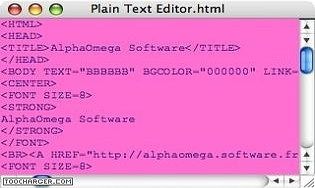
While these are very popular plugins, there are downsides to enabling their use on a site. Here are some things to consider before enabling the non-default plugins: Not all plugins are enabled by default and the administrator of each site should give careful thought as to which plugins they choose to enable for their users. This setting allows the administrator to specify the time between autosaves. Text is automatically saved at regular intervals so it may be restored when the user returns to a form they had previously left.

The icons are displayed in related groups and the administrator can decide how many groups to display in the default collapsed state of the toolbar (that is, how many groups to display on Row 1). Here for example are the available colours when 'fontcolor' is added: all the buttons in the "files" group interact with the file picker in some wayĮxtra plugins from the list (for example 'Font color' or 'Emoticon') may be added by typing the toolbarconfig term into the toolbar config table.
#Plain text editor. how to#
The reason there are names for the groups is that it helps to make you think about how to group the buttons sensibly and not just stick new buttons in random locations. The exact word to insert here for each button is listed in the "Toolbar config" column above. The list of buttons says which button goes in which group and in what order. The group names on the left have no effect on how the toolbar works they just need to be different for each button (and no spaces please). The toolbar is split into groups of related buttons. In Moodle 3.0 onwards, extra buttons are provided for square roots, fractions and vectors. If either the MathJax or the TeX notation filters are enabled (in Administration > Site administration > Plugins > Filters > Manage filters) then an equation editor button is provided in the toolbar for launching the equation editor. is it bold), as well as a listing of any images or links in the text. The screen reader helper provides additional information about the currently selected text (e.g. Screen readers basically treat a content editable region like a text box - which is wrong, because it can contain images, links and more. All tables should contain row or column headers.Tables should not contain merged cells as they are difficult to navigate with screen readers.Long blocks of text are sufficiently broken up into headings.Contrast of font colour and background colour meets WCAG AA guidelines.Images with missing or empty alt text (unless they have the presentation role).The list of problems that the accessibility checker looks for is: These are usually things in the way the text is constructed that can prevent all users from having equal access to information and functionality. One of the tools available in the text editor is an automated accessibility checker which checks for some common errors in the text. If more than one text editor is enabled, users can select their preferred editor via their preferences page in the user menu (top right). The order of priority may also be specified here. Text editors can be enabled, disabled or a different one set to default from Administration > Site administration > Plugins > Text editors > Manage editors. There is also a version of the TinyMCE editor and a plain text editor. The default text editor in Moodle is the Atto editor, built specifically for Moodle. Some examples of where you will see the text editor include: Editing Section headings, description of an activity, writing an answer to a quiz question or editing the content of many blocks. Many of these icons and functions should be familiar to anyone who uses a word processor.

The text editor (sometimes referred to as the 'HTML editor') has many icons to assist the user in entering content. 7.2.2.1 Background colour / Font colour.


 0 kommentar(er)
0 kommentar(er)
